Caravaggio on the Run in
Cornelius Edmund Sullivan
The Beheading of Saint John the Baptist in the cathedral in
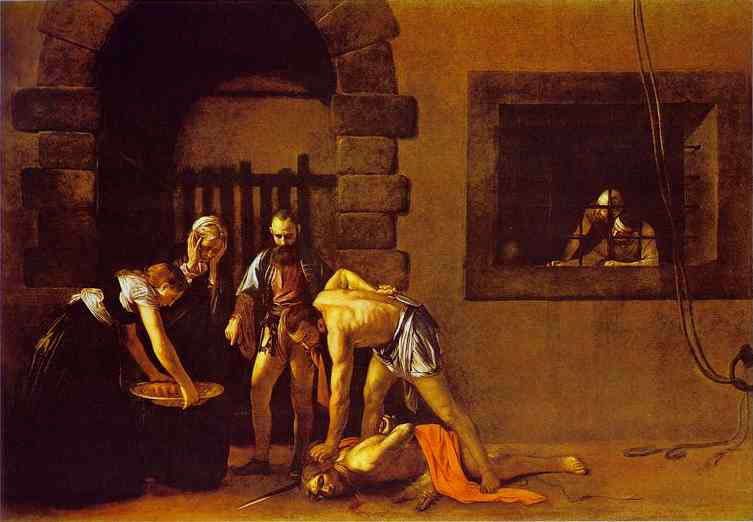
The Beheading of St. John the Baptist, Oratory of
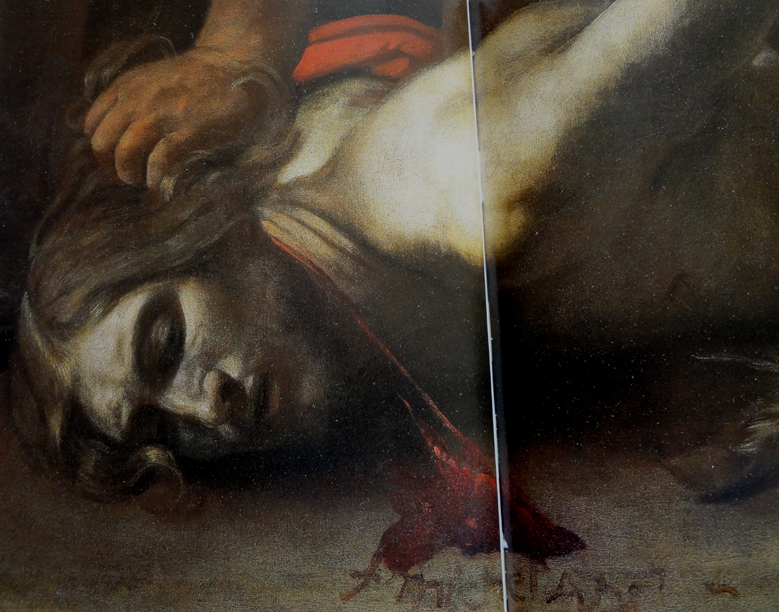
He signed not “Caravaggio”, what he was called after his own town, but “Fr (Brother) Michelangelo“, his Knight of Malta name with crimson and cadmium red gushing from John’s neck.
This painting can tell us more about the tortured psyche of the great painter, brawler, murderer, and fugitive than any other painting. Events in
Caravaggio was so well known and respected that the pope had allowed him to become a knight and it was likely that he would eventually be pardoned for the murder in
He always had a hard time with daily life if he was not painting, what he was born to do. He jumped into the fight involving some knights to protect a friend. He probably thought it was no big deal. He didn’t kill anyone and it wasn’t anything that would not happen on any Saturday night in Campo Marzio in
The stock, easy answer to the question of why the great painter was always involved with criminal acts of violence, is that he had a predisposition for it and that he became easily insulted. Like a tragic Greek hero his fatal flaw would bring him down. But did he sense that centuries later his painting in
My eyes tell me that whether he paints executioners or saints, his love for them as human beings shows. This is one of the reasons he is a great artist and his art has universal recognition and appreciation.
In the prison without his sword, his nightmares returned again, the ones about the bounty hunters taking his head for the reward. He could not stay locked up, they would find him. The Beheading of Saint John the Baptist is a painting of his own worst nightmare. It is the most brilliant case of artistic sublimation, turning his dreadful dream into a biblical tale, and being paid to paint it.
After the homicide in
In
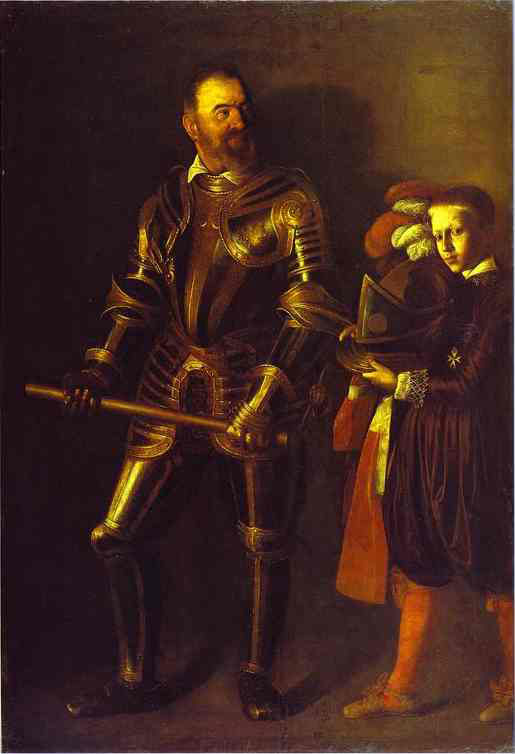
Alof de Wignacourt, Musee de Louvre
From Caravaggio, Art, Knighthood, and Malta, by Keith Sciberras- “Less than two years after murdering Ranunccio Tomasoni, some eight months after he left Naples, a new chapter in his life was to begin. …the concessions made by Paul V represented a major step towards pardon.” -1.
In front of his painting of The Beheading Saint John the Baptist in the sanctuary of the Oratory of the Cathedral at
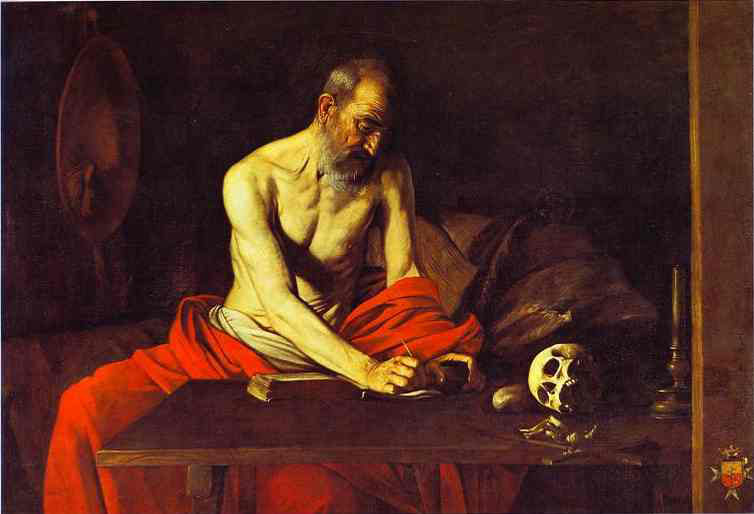
Saint Jerome Writing,
But after his escape…”the Grand Master wanted fugitives back in
Many consider The Beheading of Saint John the Baptist to be Caravaggio’s best painting. I think it is The Calling of Saint Matthew, the master’s first great painting and the painting that changed the history of painting and formed a new way to make religious art.
Biographer Helen Langdon says about the Beheading of the Baptist, “It is an ignoble scene. John does not kneel as is customary… but is brought low on the ground and his body is trussed like that of a sacrificial lamb his hands tied behind his back his red cloak suggesting blood and a rope snaking across the floor…
…Its ignobility must have startled young knights who received instruction before it and who aspired to the glorious feats of Christian chivalry yet it is a meditation on the reality of martyrdom…” -3.
Art Historian Howard Hibbard on the signature, “… The signature is proof of Caravaggio’s pride in attaining the honor he had sought so assiduously: its place and its nature are almost pathological and they seem to confirm our suspicions of Caravaggio’s identification with the Baptist and of his unusual preoccupation with beheading.” -4.
The executioner is poised with blade for his final effort in a scene stilled, stopped in time. The Caravaggio red in the burnt umber dungeon is John’s cloak and also becomes the spilled, sacred stain. The bones of the prophet’s face in the dark show John’s character forged by wilderness fasting and show his resolve in martyrdom.
The painter’s defrocking carried the same irreversibility as a beheading, no going back.
He was pardoned to return to
He is an artist who knew the highs and lows of life. He painted the Baptist in his low death, in a place familiar to the artist, the lowest darkest cell. The one to come that John announced died upright with arms raised to the sky and breathed his last, giving up freely what was his own, what was not given to Him. Caravaggio painted Saint John the Baptist at his own final baptism, not a baptism by water, a baptism by blood.
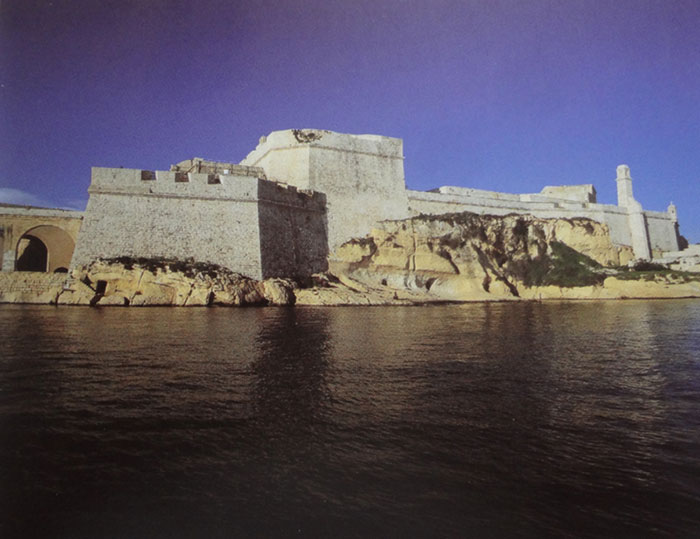
The prison
1. Caravaggio, Art, Knighthood, and
2. Sciberras, p.34
3. Caravaggio, Helen Langdon, 1998,p.357.
4. Caravaggio, Howard Hibbard, 1983,p.238.